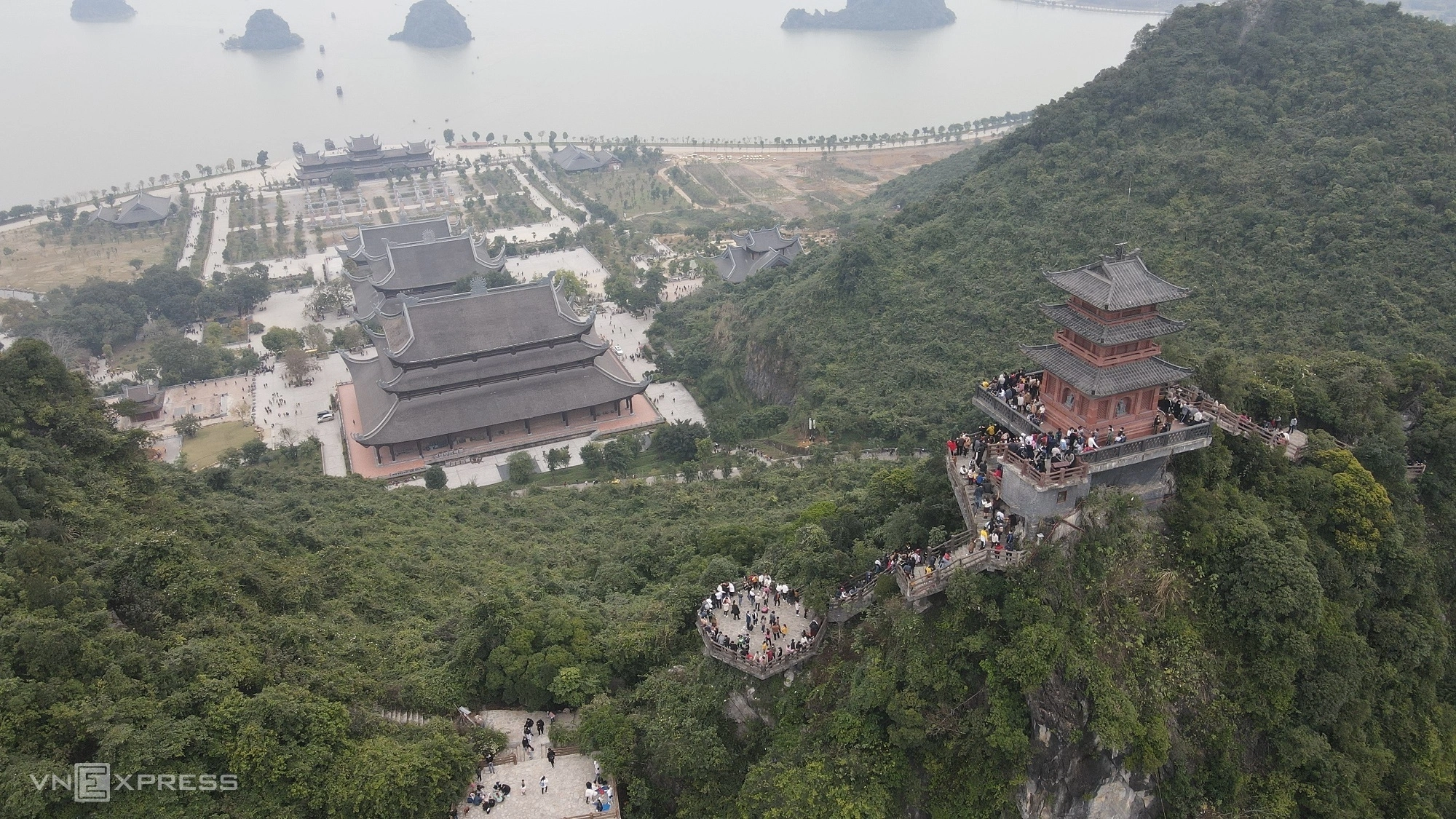The other three sites recognized on 11/9 are the tomb of Nguyen Sinh Sac in Cao Lanh ward, Dong Thap province; sites associated with the Nghe Tinh Soviet movement (1930-1931) in Nghe An province; and Co Le pagoda in Ninh Binh province.
The prime minister assigned the minister of culture, sports, and tourism, along with the provincial chairs of the mentioned provinces, the responsibility of managing these national relics.
According to the law of cultural heritage, a special national relic holds exceptional value and represents the nation.
 |
Tam Chuc Pagoda in Ninh Binh. Photo: Pham Chieu |
Tam Chuc Pagoda in Ninh Binh. Photo: Pham Chieu
Two years ago, Tam Chuc was designated a national relic. At the time, Tran Dinh Thanh, deputy director of the cultural heritage department, confirmed that the site met all the criteria for national relic status after careful and scientific evaluation.
The 5,000-hectare Tam Chuc landscape includes almost 1,000 hectares of lakes, 3,000 hectares of limestone mountains, natural forests, and valleys, fulfilling the criteria for national relic status. It is home to a population of 100 endangered white-rumped langurs, various fish species, snipe, storks, and herons, and was inhabited by ancient Vietnamese people 10,000 to 30,000 years ago.
The Tam Chuc communal house is dedicated to Dinh Tien Hoang and Queen Duong Thi Nguyet. The ancient Tam Chuc pagoda honors Zen master Nguyen Minh Khong and Buddhist King Tran Nhan Tong. The Ba Sao - Tam Chuc area formed millions of years ago and "has archaeological value." The complex has been designated as a key national tourism area.
Vu Tuan












